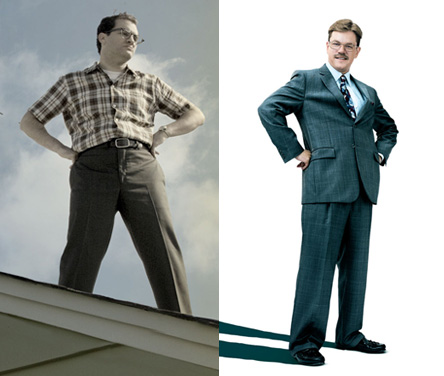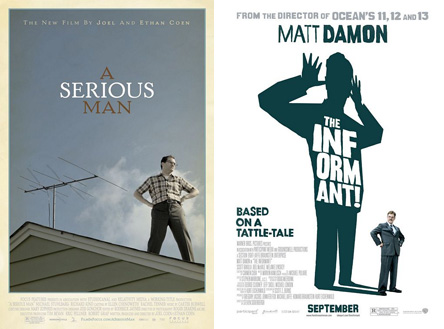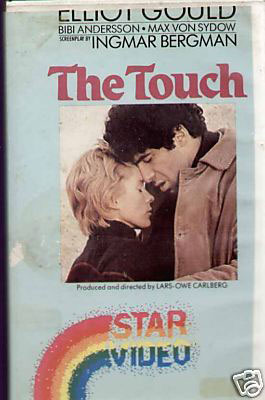
Is it just me or did anybody else get The Informant! and A Serious Man a little mixed up? You vaguely knew that the Coen Brothers directed one and Steven Soderbergh directed the other, but you couldn’t quite keep them straight, right? (No? Maybe it was just me). For years now the Coen Brothers and Steven Soderbergh have been dividing up the work of making the smartest, most beautifully-crafted, halfway-serious, semi-indie films out there, but until this fall I’ve never really thought of them in the same breath, and that’s despite both of their close connections with George Clooney (who appears in neither of these films, even though he seems to be in every other film out right now). But then The Informant! and A Serious Man were released within two weeks of each other and it got me thinking.
Joel and Ethan Coen are, respectively, 8 and 5 years older than Soderbergh. All three of them have been making films since the mid ’80s. Though the Coen aesthetic is easier to pin down than the Soderbergh aesthethic (Soderbergh being far more restlessly adventurous and experimental) their filmographies have much in common. Both (if I can refer to the Coens as a single entity from now on) have made noiry thrillers (Blood Simple; The Underneath) and both have made comic thrillers (Fargo; the Ocean trilogy); both have made jail-break movies starring Clooney (O Brother Where Art Thou?; Out of Sight); both have made ravishing black and white fables (The Man Who Wasn’t There; Kafka); both have essayed left-of-field remakes (The Ladykillers; Solaris); both have contributed short films to portmanteau projects (the Coens to Paris, je t’aime and Chacun son cinema, Soderbergh to Eros). And both have won Oscars and Palmes d’Or.
Above all, both are incredibly fast-working and prolific. The Coens have made half their 14 features in this decade alone. But Soderbergh trumps that, making almost as many features (12, or even 13 if you count Che as two films) in the ’00s than the Coens have made in total, not to mention a TV series (K Street). But the Coens write all their own material, while Soderbergh, who started out as the archetypal writer-director with Sex, Lies and Videotape seems to rely more these days on other screenwriters. The Coens moonlight as their own editor under the pseudonym Roderick Jaynes, while Soderbergh (who also moonlights occasionally as his own editor under the pseudonym Mary Ann Bernard) works as his own cinematographer under the pseudonym Peter Andrews (and is one of the best cinematographers in Hollywood at that).
Which brings us to The Informant! and A Serious Man: two very different films which could hardly be more alike. Two films about bespectacled Midwestern suburban putzes who wear their pants too high and feel that the world is against them. Both films had little fanfare before they started getting themselves noticed this summer (The Informant! with its Saul Bass-y poster, A Serious Man with its what-is-it trailer) then premiering within a day of each other at the Toronto Film Festival (though The Informant! had bowed four days earlier in Venice) and opening theatrically within three weeks of their premiere. (Though both directors have appeared in one of the previous two New York Film festivals, I would assume that the NYFF must have rejected both these new works). Though the films have widely differering budgets ($7 million for A Serious Man, $22 million for The Informant!) neither really looks particularly more expensive than the other, with the big difference in cost being the casting: Soderbergh has Matt Damon, while the biggest names in A Serious Man are Richard Kind and Fyvush Finkel (the film’s star Michael Stuhlbarg being better known on Broadway). Though A Serious Man is a film about Judaism (or is it about Jewishness?) and The Informant! is a film about Capitalism (or is it about greed?), the two films have a similar setting and a similar darkly humorous tone. Both films were shot on location (A Serious Man in Minneapolis MN and The Informant! in Decatur IL) and spend equal time in suburban living rooms, kitchens and driveways, offices, and motels. In both films FBI men arrive on doorsteps and bosses linger in office doorways making veiled threats.
Larry Gopnik in the Coen film is a Job-like figure who suffers the slings and arrows of outrageous fortune (Stuhlbarg played Hamlet in Central Park last summer in preparation) while Damon’s Mark Whitacre is a man who, though even more paranoid than Gopnik, is more the agent of his own demise. Both ultimately are company men (and scientists no less) just trying to work their way up the ladder—Whitacre as a biochemist at a giant Midwestern corporation, Gopnik as a physics professor at a small Midwestern university.
One of the biggest differences between these serious men, beyond their religion, is their wives. One has the most supportive wife in living memory. The other, the least. If you’ve seen either you’ll know what I mean.
Due to the presence of Damon and the backing of Warner Brothers, The Informant opened with a $10 million weekend, has played on up to 2,505 screens and has grossed $33 million to date. A Serious Man (distributed by Focus Features) had a $251,000 opening weekend, has played on up to 262 screens and has grossed $7.5 million. But A Serious Man is the better reviewed film (79 metacritic rating, 86% rotten tomato rating, against The Informant!’s 66 and 76%) and looks to play longer.
Adding to the confluence of these films is that I feel almost exactly the same way about them. I enjoyed them both a lot and was a little dissatisfied by them at the same time. If I had to recommend one over the other it would be A Serious Man, but only just.
And then, of course, there are the posters. Assume the position…





